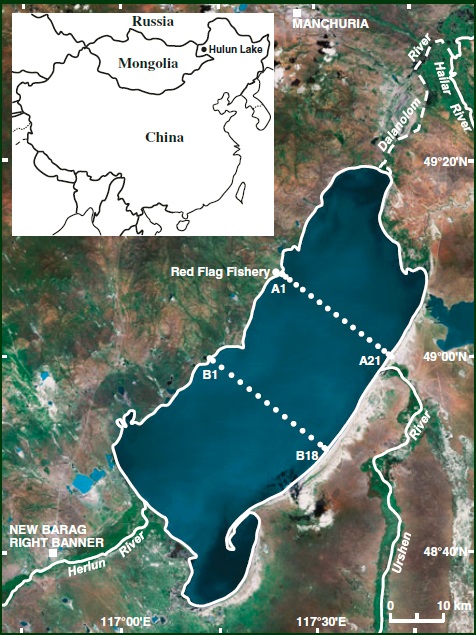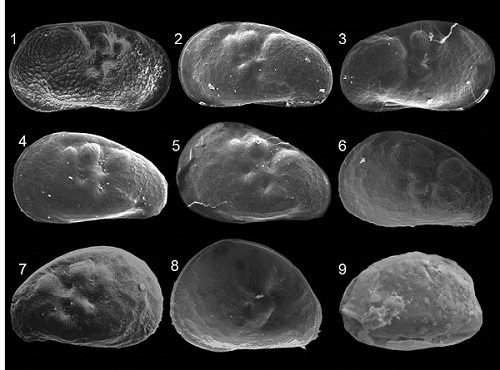Spatial heterogeneity of the population age structure of the ostracode Limnocythere inopinata in Hulun Lake, Inner Mongolia and its implicationsUpdate time:10 10, 2013
Vice Professor ZHAI Dayou and his team analyze 39 surface-sediment samples from Hulun Lake, Inner Mongolia, for ostracode species compositon and 17 of them also for population structure of Limnocythere inopinata, which is the dominant ostracode in the lake. A total of nine ostracode species were recovered, most of which show high abundances at sites with rich plant detritus, implying the possible control of food supply on ostracode species occurrence in the lake. On the other hand, both the subfossil and the living populations of L. Inopinatahave greater numbers of early instars in deeper waters, while middle and late instars occur mostly in shallower waters, which is related to the grainsize composition of the substrate, denoting a hydraulic control on population structure. Pre- and post-mortem transport of ostracodes may be responsible for the observed within-lake changes in the population structure, although other factors such as migration, intrinsic population dynamics, and life cycle could also be involved. Their data provide insights into the interpretation of lake conditions when using ostracodes in paleolimnological research of lakes with similar natural settings.
Fig. 1 Map of Hulun Lake. (Image by ZHAI)
Fig. 2 Photos of Limnocythere inopinata in the surface sediments of Hulun Lake. (Image by ZHAI) Zhai et al. Spatial heterogeneity of the population age structure of the ostracode Limnocythere inopinata in Hulun Lake, Inner Mongolia and its implications. Hydrobiologia, 2013, 716: 29-46 (Download Here)
|
Contact
Related Articles
Reference
|
-
SIMSSecondary Ion Mass Spectrometer Laboratory
-
MC-ICPMSMultiple-collector ICPMS Laboratory
-
EM & TEMElectron Microprobe and Transmission Electron Microscope Laboratory
-
SISolid Isotope Laboratory
-
StIStable Isotope Laboratory
-
RMPARock-Mineral Preparation and Analysis
-
AAH40Ar/39Ar & (U-Th)/He Laboratory
-
EMLElectron Microscopy Laboratory
-
USCLUranium Series Chronology Laboratory
-
SASeismic Array Laboratory
-
SEELaboratory of Space Environment Exploration Laboratory
-
PGPaleomagnetism and Geochronology Laboratory
-
BioMNSFrance-China Bio-mineralization and Nano-structure Laboratory

 Print
Print Close
Close

